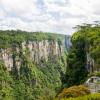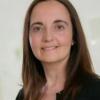
Storing greater amounts of water in Brazil’s reservoirs could increase precipitation and river flow, alleviating the water and energy supply crisis in Brazil.
Large reservoirs in Southeastern Brazil can double river flow if the reservoirs are full, compared with empty reservoirs, according to a new study published in the journal Energy, from researchers at the International Institute for Applied Systems Analysis (IIASA) and several universities in Brazil.
“It is widely accepted that river flow impacts reservoir levels. This is true on a weekly and monthly scale. However, on an annual scale the level of the reservoirs actually has a greater effect on the inflow of the river in the Southeast of Brazil,” says study leader Julian Hunt, a researcher in the IIASA Energy, Climate, and Environment Program.
This seemingly counter intuitive finding has major implications for water and energy management in Brazil, which is in the midst of a historic drought and a resulting energy crisis in a country that gets two thirds of its energy from hydropower.
The study suggests that keeping the reservoirs at low levels since a drought in 2014 could have exacerbated the problem and contributed to the water and energy crisis facing Brazil today.
“In most locations in the world, it is accepted that hydropower reservoirs reduce the river flow below dams. However, in locations where humidity levels are close to 100%, evaporation rates are small because the air is already saturated with humidity,” explains Hunt.
In humid conditions, like southeastern Brazil during the rainy season, the presence of a large body of water — a full reservoir — significantly increases the chance for precipitation.
In the new study, the researchers analyzed river flow for eight dammed reservoirs in the region — Brazil’s major producer of hydropower. They estimated the natural flow of the rivers prior to damming in 1970 to water flow today, during the wet and dry seasons. The aim was to understand why the river flow in the Brazilian Southeast reduced 60% from one year to another after 2014, strategies needed to refill the reservoirs, and the minimum water levels needed to keep the system operational.
They found that in Southeastern Brazil, the impact of the reservoir level in October can be as much as an increase of 112% in river flow.
Hunt and colleagues found that to maximize water and energy resources, smaller reservoirs on the head of the river reservoirs should be filled first, then larger ones. They also provide specific recommendations for reservoir storage levels and hydropower production after the reservoirs are filled, writing that the average level of the reservoirs at the end of October should be 78% and the hydropower plants in cascade should operate with a capacity factor of 50%.
Droughts in Brazil not only impact the country's electricity sector but also global food prices. The country is the largest producer of soybean, sugar, and coffee. Drought takes a toll on food production.
By allowing the reservoirs to rise, the researchers say, Brazil could generate more hydropower with existing dams, reduce its electricity costs and CO2 emissions, and increase the agricultural production of the country.
“We should realize that managing water, land and other resources is not just a way to adapt to a changing climate. It can also affect the climate itself,” says Hunt.
Reference
Hunt, J., Nascimento, A., Schwengber ten Caten, C., Caputo Tomé, F.M., Schneider, P.S., Ribeiro Thomazoni, A.L., José de Castro, N., Brandão, R., et al. (2022). Energy crisis in Brazil: Impact of hydropower reservoir level on the river flow. Energy 239 e121927. DOI: 10.1016/j.energy.2021.121927. [pure.iiasa.ac.at/17425]
News

29 November 2023
Embracing ecological perspectives, tools, and models to navigate the digital economy

27 November 2023
A credible path for Brazil to reach net zero by 2050 depends on nature-based solutions

27 March 2023
